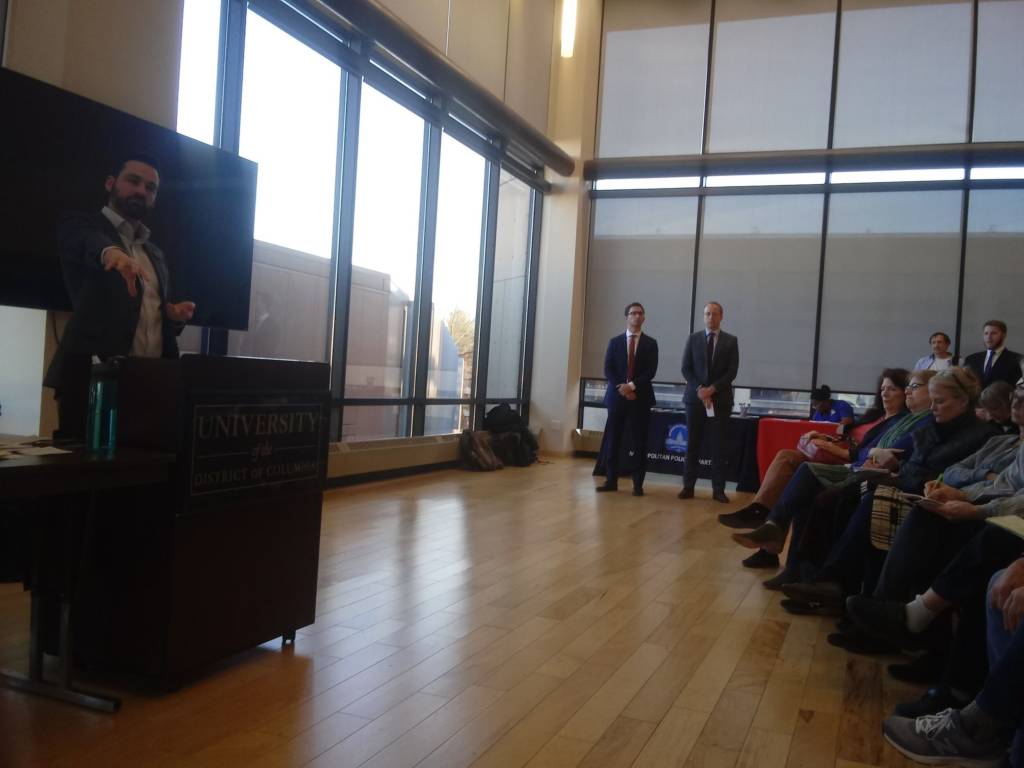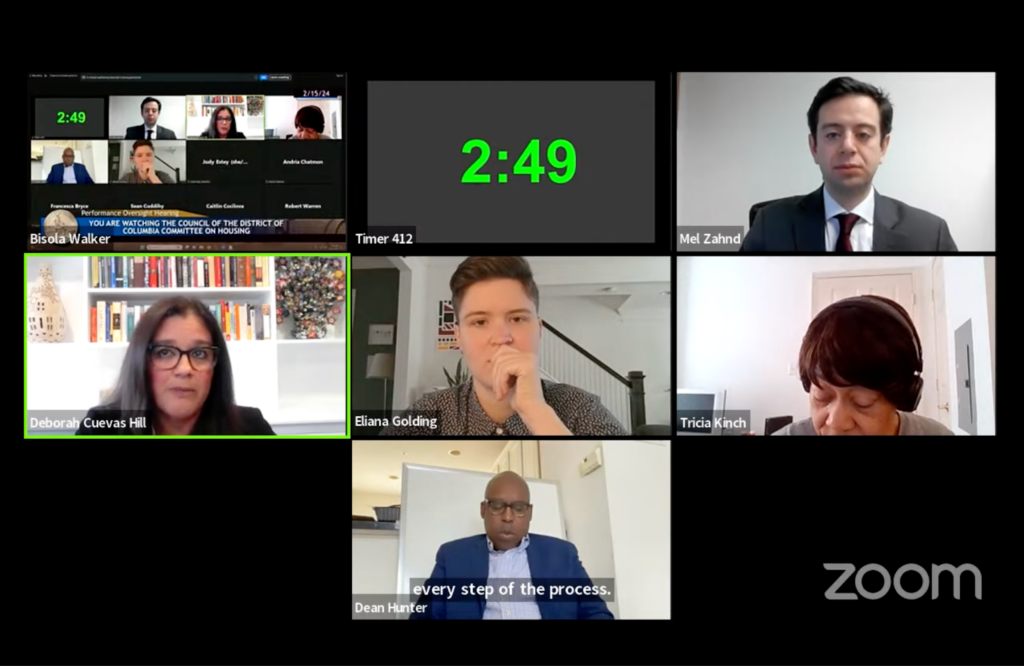Ward 3, home to American University, seems to be thriving. But in the midst of many middle- to high-income earners, there are people dealing with homelessness. Last month, the University of the District of Columbia hosted a panel to talk about homelessness in the most affluent ward in the city.
The community had received attention due to legal challenges from some residents in ANC 3C who opposed using a Ward 3 location for a new family shelter, one of seven that would replace D.C. General family shelter, which was closed last year. More recently, at a D.C. Council oversight hearing in February, residents of the Sedgwick Gardens apartment building in ANC 3F testified that low-income recipients of housing assistance were being “dumped” in their building, not receiving enough support, and sometimes endangering other residents. The Washington Post reported that the D.C. Department of Human Services responded to this testimony by assigning licensed social workers to the building in the evenings.
[Read more: The first three D.C. General replacement shelters open]
The UDC-hosted panel, proposed by commissioners from ANC 3B, was co-moderated by Ward 3 Councilmember Mary Cheh and Ward 1 Councilmember Brianne Nadeau.
“We can be the government that ends homelessness,” Nadeau said, setting the stage for the night’s conversation.
“There is not one solution, there are many solutions,” Cheh added.
Responding to a written question from the audience asking what can be done to house people who are on the streets, Nadeau called for “more places like La Casa.” La Casa was once a low-barrier shelter in the Columbia Heights neighborhood made up of several trailers. In 2014, several years after its closure, the site was converted into permanent supportive housing for about 40 men.
Larry Handerhan, representing the D.C. Department of Human Services, gave the audience a rundown of services that DHS provides for people experiencing homelessness. “The work to end homelessness is a priority of the mayor and what we come to work every day to do,” he said. “We want people to live in the community and use the choices they have.”
Jean-Michel Giraud, executive director of Friendship Place, spoke of programs offered by his organization. He said the solutions to homelessness are economic and advocated for more job placement and soft skills training programs, which Friendship Place provides. He said homeless people don’t have time to wait for jobs and no one can make a difference alone.

“If you look back, you got a hot and a cot,” he said, speaking of former days. “Then, with services and housing, came a number of conditions. We opened up the doors, we made it more humane.”
Jesse Rabinowitz, representing The Way Home Campaign and Miriam’s Kitchen, which provides meals and case management for people experiencing homelessness, said, “We don’t want to manage homelessness, we want to end it.” Around 4,160 single adults experience homelessness in the District and 1,644 those people are in need of permanent supportive housing, according to Rabinowitz. He added that the average age of those people is 55 and their life expectancy is cut short, to an average age of 62. Rabinowitz shared that clients at Miriam’s Kitchen include people who are working and some who take classes at the University of the District of Columbia.
[Read more: At least 54 people died without a home in Washington, D.C., in 2018]
“Most people want to belong to a community,” Rabinowitz said, explaining the idea behind creating permanent supportive housing. “Everybody is housing–ready. Research shows when we put people in housing, then everything will come.”
The panel also featured Waldon Adams, a peer specialist with Pathways to Housing D.C., who is formerly homeless. “I was one of the first housing first participants,” Adams said. “By the time I came to Friendship Place I was really sick. I’ve been to every psych ward in the city. It cost more to keep me in the psych ward for six months than to have me housed for three years.”
Adams said life has gotten a lot better for him and housing saved his life.
Stressing the importance of permanent supportive housing, which is what Adams benefited from, Rabinowitz said there is often tension between voucher holders and existing residents, who do not receive rent subsidies, when they begin sharing a building. He suggested this discomfort stems from racial differences or differences in economic status.
Councilmember Cheh acknowledged constituent complaints about Sedgwick Gardens, saying she has visited the Connecticut Avenue building. Voucher holders occupy approximately half of the 140 units, which is an unusually large number, according to Cheh.
Fifty percent of the rent-subsidized residents of Sedgwick Gardens receive federal housing vouchers through the D.C. Housing Authority and the others are provided with vouchers by the D.C. Department of Human Services. The housing authority operates independently of the mayor’s administration, but two bills introduced at a Feb. 5 legislative meeting may change that.
“The number of calls for service by the police have increased way up,” Cheh said. “And the incidents that have occurred, from barricading an apartment to actual criminal activity, are not to be pushed to one side.”
Cheh said that these incidents cannot be used as reasons to discriminate against low-income tenants.
Beyond the situation at Sedgwick Gardens, Cheh went on to describe several predatory situations low-income tenants are vulnerable to. She worried that some apartment owners are letting their units run down until they become uninhabitable. When people clear out because of the poor conditions, the owners are free to do what they will with the properties, Cheh said.
Some bad acting property owners have been exploiting a loophole to get around rent control: they make rent-controlled units available to voucher holders, whose benefits pay more than rent control would normally allow. Then, when the voucher holder moves, the apartment can be rented to the next tenant at the higher rate.
“This, I believe — and I‘m worried about it — is a strategy to convert rent-controlled units to market-rate apartments,” Cheh said, urging residents to pay attention and not brush discrimination concerns to one side, either.
It remains to be seen just what path the conversation in Ward 3 will take regarding homelessness and permanent supportive housing. Cheh stressed the importance of continued dialogue among residents.
Correction (04.08.2019)
This article has been updated to use the statistics for the number of people experiencing homelessness in the District of Columbia that Jesse Rabinowitz cited in his remarks on the panel.








